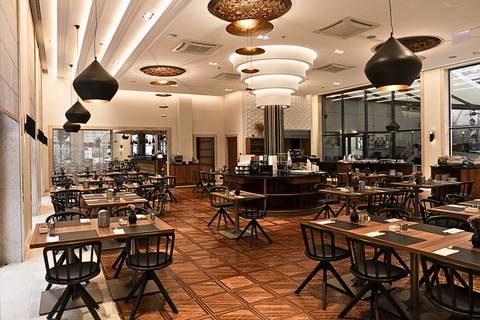Andrássy út is Budapest’s own Champs-Élysées, a showcase boulevard of significant institutions, embassies, high-end boutiques and villas.
Construction began in the early 1870s as part of Pest’s significant urban development. In 1885, it took the name of Hungary’s first prime minister, Count Gyula Andrássy, who was instrumental in its creation.
When he died, in 1890, the city’s first metro running immediately below the boulevard had been planned but not yet executed. Its opening would coincide with Hungary’s millennial celebrations of 1896, connecting Erzsébet tér in the city centre with Heroes’ Square at the southern and northern ends of the avenue. Behind Heroes’ Square, the large recreational space of Városliget staged many of the millennial events.
Today the heritage-styled Millennium Underground forms part of the Budapest’s four-line network.
Andrássy út, meanwhile, can be divided into three main sections: the busy downtown stretch between Erzsébet tér and Oktogon is dominated by luxury brands, the Opera and the Paris Department Store, now an entertainment venue and elegant café. Nearby, immediately off Andrássy, Nagymező utca and Liszt Ferenc tér provide a cultural backdrop of theatres, photo galleries and Budapest’s prime concert hall for classical music.
From Oktogon to Kodály körönd, the avenue is expanded by a service road and a tree-lined walkway on each side. Here, you’ll find the House of Terror, a unique museum mainly focused on the horrendous aftermath of incarceration and torture after the 1956 Uprising, in the building where it all took place. On a lighter note, nearby stand museums dedicated to Franz Liszt and, by the rond-point named after him, Zoltán Kodály, in houses where each composer lived.
Between Kodály körönd and Heroes’ Square, the architectural tone changes from scenic to stately. The Russian, South Korean, Bulgarian, Turkish, Serbian and Albanian governments all prefer to be represented here rather than around the upscale residential districts of Buda, while cultural institutions tend to be niche – the East-Asian art collection of Oriental voyager Ferenc Hopp, the KOGART Gallery, the MagNet Community Center – rather than draw hordes of visitors. The Serbian, former Yugoslav, Embassy has a footnote in Hungarian history books as it was here that the deposed hero of the 1956 Hungarian Uprising, Imre Nagy, sought sanctuary from Soviet forces. His stay barely lasted three weeks.
Beckoning from blocks away is the figure of the Archangel Gabriel, centrepiecing Heroes’ Square atop a 36-metre column, in perfect symmetry with arrow-straight Andrássy út.





